Characteristics of the vanguards: What is it, Characteristics and Meanings
Characteristics of the vanguards
In the 20th century an immense variety of artistic movements emerged. Many of them have been classified as avant-garde, whether artistic or literary, while others have not, such as art deco, for example.
This depends, to a large extent, on the fulfillment of a set of characteristics. Let's get to know in detail the elements that define or characterize avant-garde movements.
Purpose of breaking with the past (revolutionary spirit)
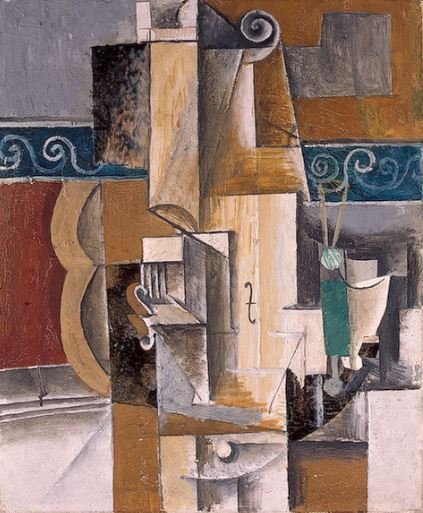 Pablo Picasso: Guitar and violin. c. 1912. Cubism. Oil on canvas. 65.5 x 54.3 cm. Hermitage Museum, St. Petersburg.
Pablo Picasso: Guitar and violin. c. 1912. Cubism. Oil on canvas. 65.5 x 54.3 cm. Hermitage Museum, St. Petersburg.
The first characteristic element of all avant-garde is the rupturism or spirit of rupture with tradition. Avant-garde movements question the traditions of academic art, which includes not only the themes, but especially the principles of composition, be they plastic or literary.
Opposition to naturalistic representation
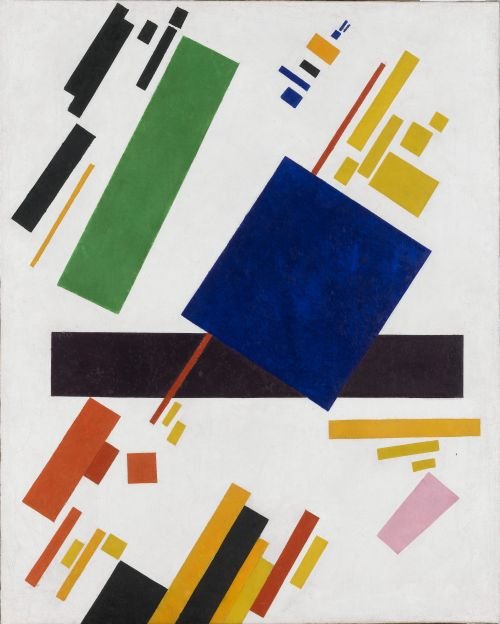 Kazimir Malevich: Suprematist Composition . 1916. Suprematism (geometric abstractionism). Oil on canvas. 88.5 x 71 cm. Private collection.
Kazimir Malevich: Suprematist Composition . 1916. Suprematism (geometric abstractionism). Oil on canvas. 88.5 x 71 cm. Private collection.
Since Classical Antiquity, Western art had been based on naturalism, that is, on the imitation of nature or representation of the apparent world. The vanguards rebel against this principle. We can think of three elementary reasons:
- the perception that there was nothing that could surpass the masters of the past,
- the exhaustion of the iconographic program and, finally,
- the historical transformations, especially social and technological, that changed the function of art in society, so it made no sense to adhere to the uses and customs of nineteenth-century art. EXAMPLE
Valuation of the compositional elements themselves
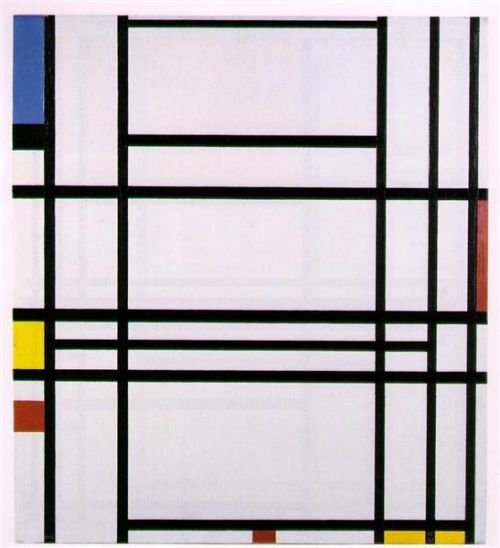 Piet Mondrian: Composition No. 10 . 1942. Neoplasticism. Oil on canvas. 79.5 x 73. Private collection.
Piet Mondrian: Composition No. 10 . 1942. Neoplasticism. Oil on canvas. 79.5 x 73. Private collection.
By breaking with the principle of imitation of nature and promoting originality, the avant-gardes promoted the autonomy of language itself (plastic or literary), free from subordination to content.
In the visual arts, some avant-gardes took this to such an extreme that they eliminated outright any reference to the themes or any temptation to "meaning" so that elements such as lines, points or geometric shapes could be valuedly appreciated. Hence the resignation to title many works. For example, the numbered compositions of Piet Mondrian.
In literature, this was expressed, among other ways, in a dissociation between the sign and the referent, which would allow the aesthetic evaluation of language as an autonomous reality, outside of any significant obligation.
Search for originality and novelty
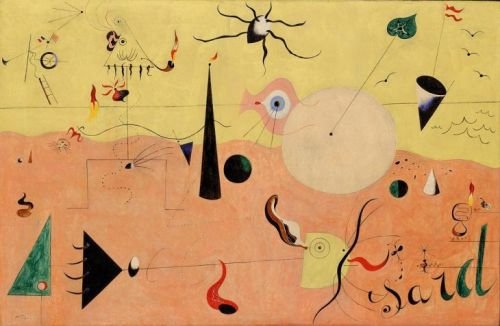 Joan Miró: Catalan Landscape . 1924. Surrealism. Oil on canvas. 64.8 x 100.3 cm. Museum of Modern Art, New York.
Joan Miró: Catalan Landscape . 1924. Surrealism. Oil on canvas. 64.8 x 100.3 cm. Museum of Modern Art, New York.
All these elements combine to proclaim originality as a characteristic element of the avant-garde. Each one of them tried to constitute its own, original language, marked by novelty.
Proclamation of creative freedom
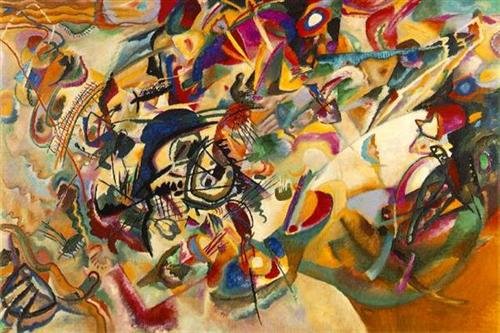 Vassily Kandinsky: Composition VII. 1913. Abstractionism. 195 x 300 cm. Tretyakov Gallery, Moscow.
Vassily Kandinsky: Composition VII. 1913. Abstractionism. 195 x 300 cm. Tretyakov Gallery, Moscow.
The desire for originality requires the avant-garde to proclaim maximum creative freedom. If the art of the academy sought from the artists the assimilation of minimum conventions regarding the handling of plastic elements and the concept of art, the avant-gardes were the expression of a longing for individual freedom and, therefore, derived in particular languages , not conventional. This indicated the absolute independence of the commission and, consequently, the maximum personal freedom in artistic expression. .
Spirit of provocation
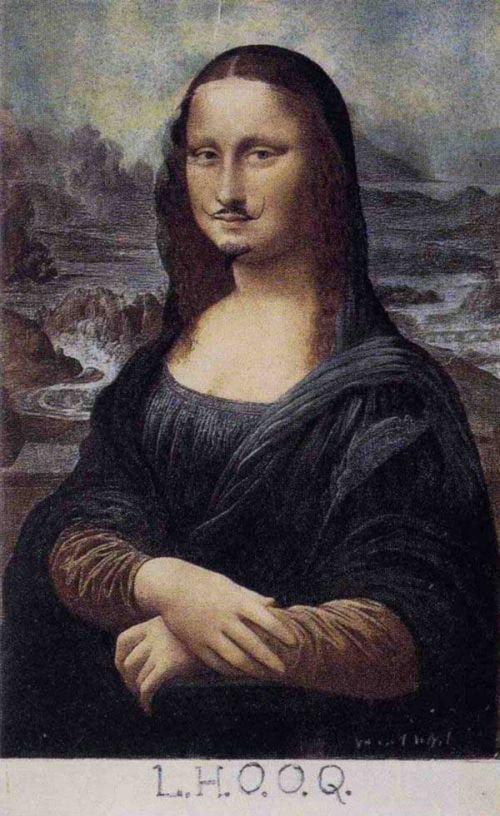 Marcel Duchamp: LHOOQ 1919. Dadaism. Ready made. 19.7 x 12.4 cm. Pompidou Center, Paris.
Marcel Duchamp: LHOOQ 1919. Dadaism. Ready made. 19.7 x 12.4 cm. Pompidou Center, Paris.
The creative freedom of the avant-garde is also, and especially, a provocation. Avant-garde movements seek to shake up the status quo , the established order in the world of the arts, which they often see as spent, exhausted or inert.
They also seek to provoke society as a whole, by challenging its taste patterns, the massification of culture or morals. Most especially, they sought to provoke bourgeois morals and taste.
Exploring playful elements
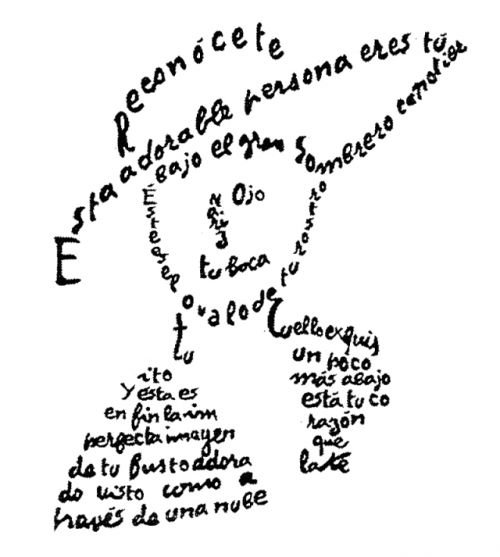 Guillaume Apollinaire: Calligram from the poem of January 9, 1915. Published in the book Calligrams , 1918. Poetry.
Guillaume Apollinaire: Calligram from the poem of January 9, 1915. Published in the book Calligrams , 1918. Poetry.
If the function of art was changing, artists found themselves free to introduce not only the key of humor in their works, which in some cases from the past can be registered even marginally. They also develop a playful perception of art, either through the complicity of the viewer, either through their participation or direct intervention.
Movements with some group articulation
Unlike Western art that, until the middle of the 18th century, responded to traditions refined over time, the avant-gardes were movements, that is, organized groups with an express vocation to promote a certain style and / or point of view. For this reason, the avant-gardes could have an interdisciplinary character, since they sought to express their programmatic contents by all possible means and disciplines.
Promulgation of manifests
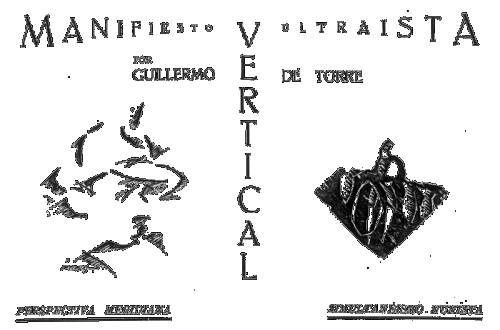
Often the vanguards were born with the publication of a manifesto or were accompanied by one. This summed up an aesthetic and, not infrequently, ideological program.
For this reason, many times the avant-garde established a relationship of dependence between artistic expression and the word, that is, a subordination of the work to the explanation or justification that contextualized it. Some examples of avant-garde manifestos are:
- Futurist Manifesto , written by Fillippo Tomasso Marinetti (1909)
- Cubist Manifesto , written by Guillaume Apollinaire (1913)
- Suprematist manifesto , written by Kazimir Malevich (1915)
- Neoplasticist Manifesto ( De Stijl ), written by Theo Van Doesburg, Piet Mondrian, Bart an der Leck, JJP Oud (1917)
- Dadaist manifesto , written by Tristán Tzara (1918)
- Constructivist manifesto , written by Naum Gabo and Antoine Pevsner (1920)
- Ultraist manifesto (strictly literary movements). There were several versions:
- A first collective version, under the guidance of Cansinos Assens (1918)
- A second version of Guillermo de Torre (1920)
- A third version of Jorge Luis Borges (1921)
- Surrealist manifesto , written by André Bretón (1924)
Politically compromised movements
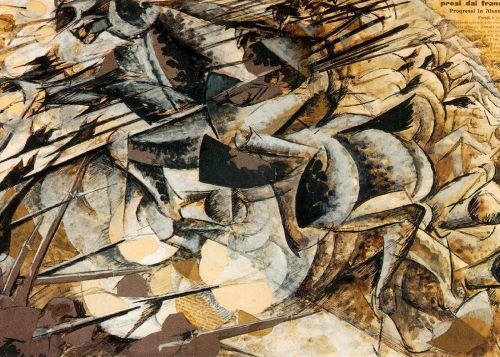 Umberto Boccioni: The charge of the spearmen . 1915. Futurism. Tempera and collage on cardboard. 32 x 50 cm. Private collection.
Umberto Boccioni: The charge of the spearmen . 1915. Futurism. Tempera and collage on cardboard. 32 x 50 cm. Private collection.
It is not surprising that most of the avant-garde movements took sides with some political tendency, from the right or the left, particularly the historical avant-gardes .
In general, avant-garde artists leaned to the left. The best known example is, perhaps, that of Pablo Picasso, a member of the French communist party. The only avowedly right-wing avant-garde was Futurism.
Need to know the history of art to understand them
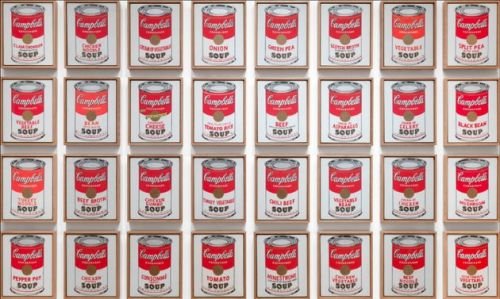 Andy Warhol: Campbell's soup cans. 1962. Pop art. Screen printing and synthetic polymer on canvas.
Andy Warhol: Campbell's soup cans. 1962. Pop art. Screen printing and synthetic polymer on canvas.
Since the avant-gardes are articulated as movements of rupture with artistic traditions or schools, understanding them in all their sense necessarily involves knowing the history of art or literature as appropriate. Only in this way can one understand, for example, the importance of movements such as cubism, geometric abstraction or pop art.
The avant-gardes rise up against the pictorial tradition, whether it is academicism, or whether it is a break with the immediately preceding avant-garde. At the same time, the correct interpretation of the avant-gardes is often subordinate to the manifestos.
Short cycles
The very synergy of avant-garde, characterized by the search for rupture and constant novelty, determines the short duration of the movements. Many of them lasted barely a decade, although certainly artists like Picasso or Salvador Dalí continued with their pictorial style once the movements had been disarticulated.
- Update date: March 9, 2021.
Recommended Contents
- Annexes (What they are, Characteristics and Meanings)
- Discovery of America
- Equipment: (What they are, Characteristics and Meanings)
- Triple Alliance (What they are, Characteristics and Meanings)
- Types of culture
- Types of science
- What are Annexes
- What are Castes of New Spain?
- What are Social Movements
- What is Equipment
- What is Fire
- What is Meme
- What is Triple Alliance
- What is the Conquest of America
- What is the right to life